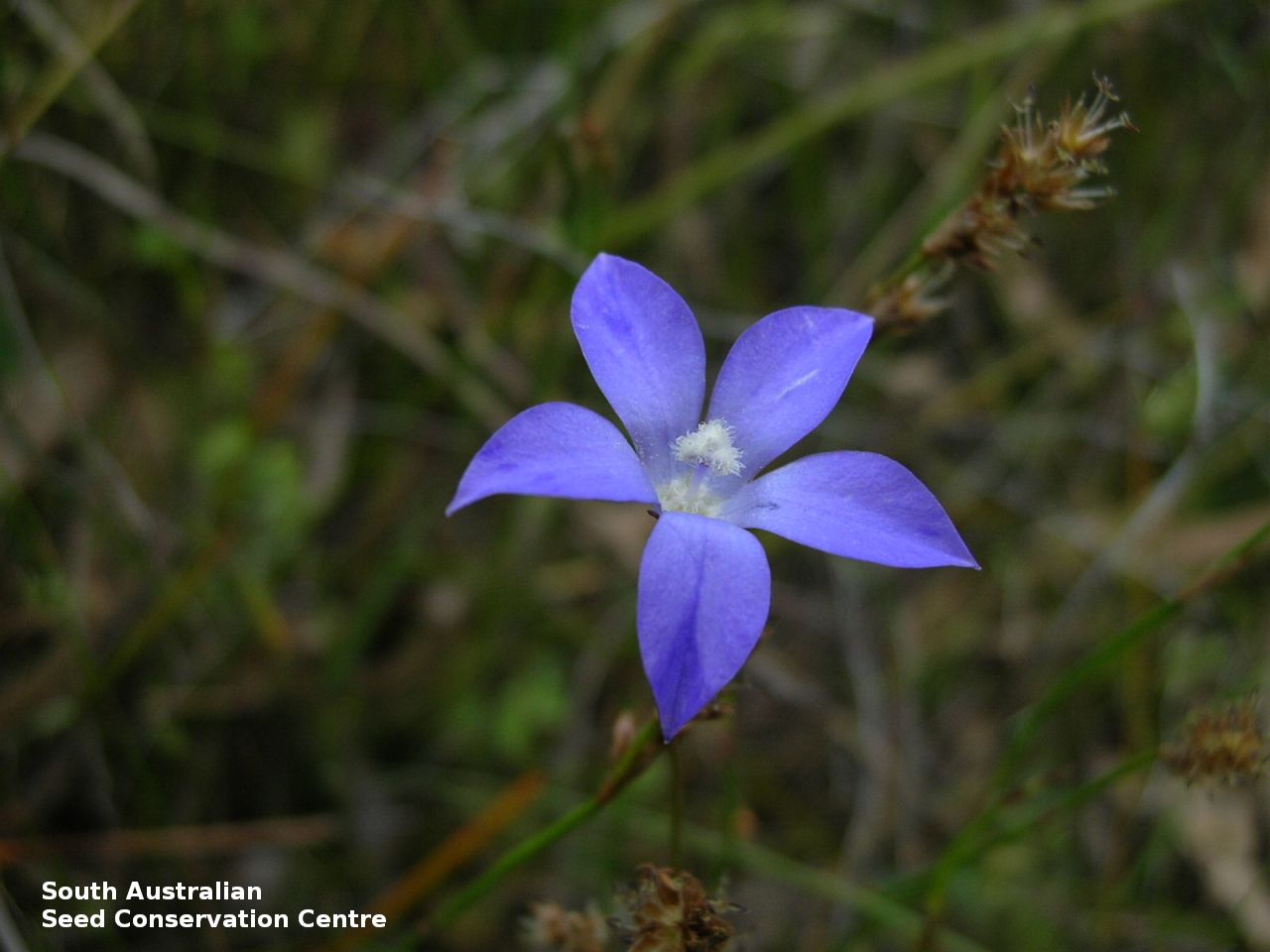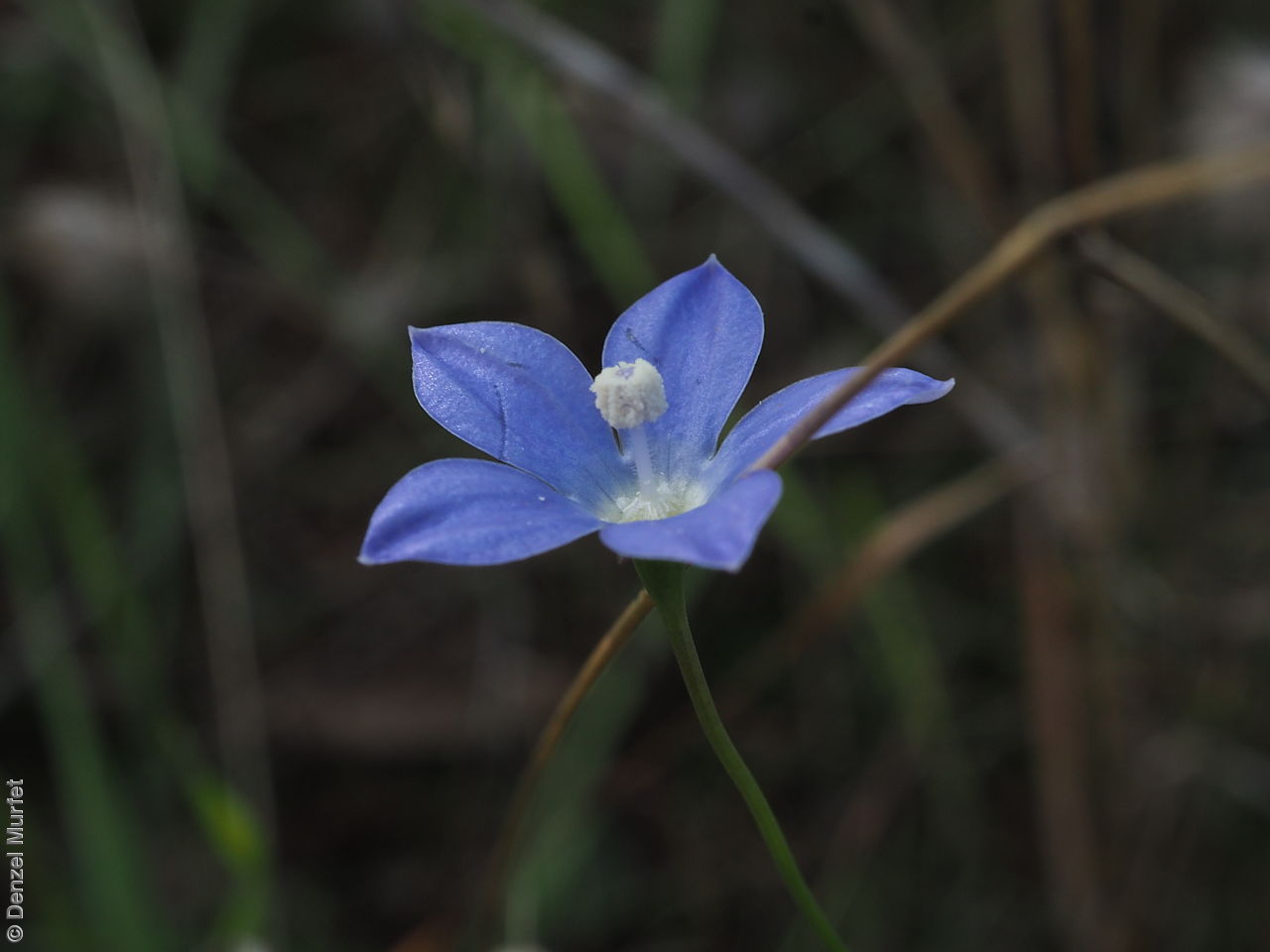














Botanical art
Common names
Naked Bluebell
Etymology
Wahlenbergia named by H.A Schrader in honour of Georg G�ran Wahlenberg (1780-1851), a Swedish professor of botany. Gymnoclada from the Greek 'gymnos' meaning bare or naked and 'clados' meaning branch, referring to the stems which are usually leafless in upper half.
Distribution and status
Found only in the lower South-east in South Australia, growing in light forest or heathland on sandy soils. Also found in New South Wales, Victoria and Tasmania. Native. Rare in South Australia. Rare in New South Wales. Common in the other states.
Herbarium region: South Eastern
AVH map: SA distribution map (external link)
Plant description
Perennial herbs with a fleshy rootstock and spreading rhizomes with stems simple or occasionally branching, smooth or with short hairs near base, erect, to 60 cm high, usually leafless in upper half. Leaves opposite near base, becoming alternate, narrowly obovate to linear, to 50 mm long and 3.5 mm wide, margins thickened, usually with a few, distant callus-teeth. Flowers blue, sometimes yellowish outside, funnel-shaped with 5 narrowly triangular lobes. Flowering between September and November. Fruits are brown ovoid capsule to 9 mm long and 4 mm wide Seeds are tiny brown elliptic seed to 0.7 mm long and 0.4 mm wide, with fine striated surface. Seed embryo type is spatulate under-developed.
Seed collection and propagation
Collect seeds between November and January. Collect capsules that are maturing, drying and turning brown with brown seeds inside. Place the capsules in a tray and leave to dry for a week. Then rub the capsules gently with your hands to dislodge the seeds. Use a sieve to separate the unwanted material. Be careful as the seeds are very small. Store the seeds with a desiccant such as dried silica beads or dry rice, in an air tight container in a cool and dry place. From two collections, the seed viability were high, at 100%.
| Location | No. of seeds (weight grams) | Number of plants | Date collected | Collection number Collection location | Date stored | % Viability | Storage temperature |
|---|---|---|---|---|---|---|---|
| BGA | 2,000 (0.11 g) | 25+ | 9-Dec-2009 | MJT268 South Eastern | 1-Jun-2010 | 100% | -18°C |
| BGA | 8,900 (0.26 g) | 30+ | 22-Dec-2010 | DJD2095 South Eastern | 1-Jan-2012 | 100% | -18°C |
Number of plants: This is the number of plants from which the seeds were collected.
Collection location: The Herbarium of South Australia's region name.
% Viability: Percentage of filled healthy seeds determined by a cut test or x-ray.